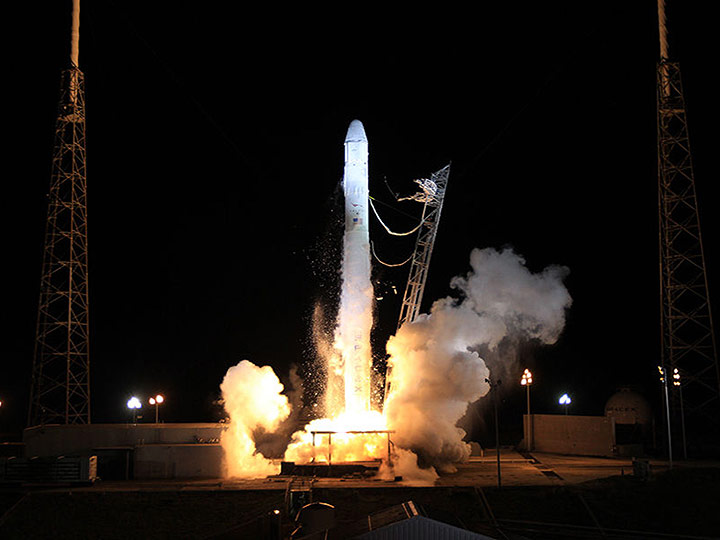At 2:44 CDT this morning, SpaceX became the first private company to launch its own spacecraft towards the International Space Station. This demonstration flight of the Dragon spacecraft is planned to safely approach the Station, establish a holding position for capture by the Station’s robot arm, and berth with the ISS to deliver cargo and student-designed science experiments.
This was the third consecutive successful launch of SpaceX’s Falcon 9 booster rocket, thus making it three-for-three. The second flight of the Falcon 9 marked the first time a private company orbited and returned its own spacecraft. Once the second stage on the booster was released, the Dragon spacecraft also deployed its solar array panels for the first time. By any measure, the SpaceX team is off to a good start.
The test flight is under the auspices of the Commercial Orbital Transportation Services project created by NASA to kickstart the development of private launch services that would be cheaper and more reliable by harnessing the innovation and drive of commercial competition. If all of the technical milestones of the COTS 2/3 flight are met, SpaceX will be clear to proceed with deliveries to the ISS through their Cargo Resupply Services contract with NASA.
SpaceX has created an entirely new launch service and reusable space capsule with only $400 million in development support from the government. All of the rest of SpaceX’s funding has come from private investment. By NASA’s own cost estimates, this service would have cost between four and ten times as much with traditional contracting and in-house methods.
Such a dramatic reduction in launch costs holds the promise of making space more accessible for economic development, fundamental science research, and long-duration space exploration missions. In the near term, though, the Dragon capsule provides a special capability for the ISS that no one else offers. Not only can Dragon ride a pillar of fire into space, it can brave the fires of re-entry to bring up to 3000 kilograms of cargo back down to the Earth.
Continued science and technology research on the ISS critically depend on this return capability. Without it, the Station’s freezers would fill up with samples, research results couldn’t get back to labs on the ground, and our science mission would grind to a halt. The Dragon capsule will bring both ambient and powered equipment back, which means we can maintain temperature control for experiments that need it and provide support for biotech and life sciences experiments.
Until the future Commercial Crew vehicles come online, SpaceX’s Dragon cargo capsule is the only visiting vehicle to the ISS that has the vital return capacity we need to keep doing the good work of the ISS on-orbit.
Images courtesy of SpaceX





